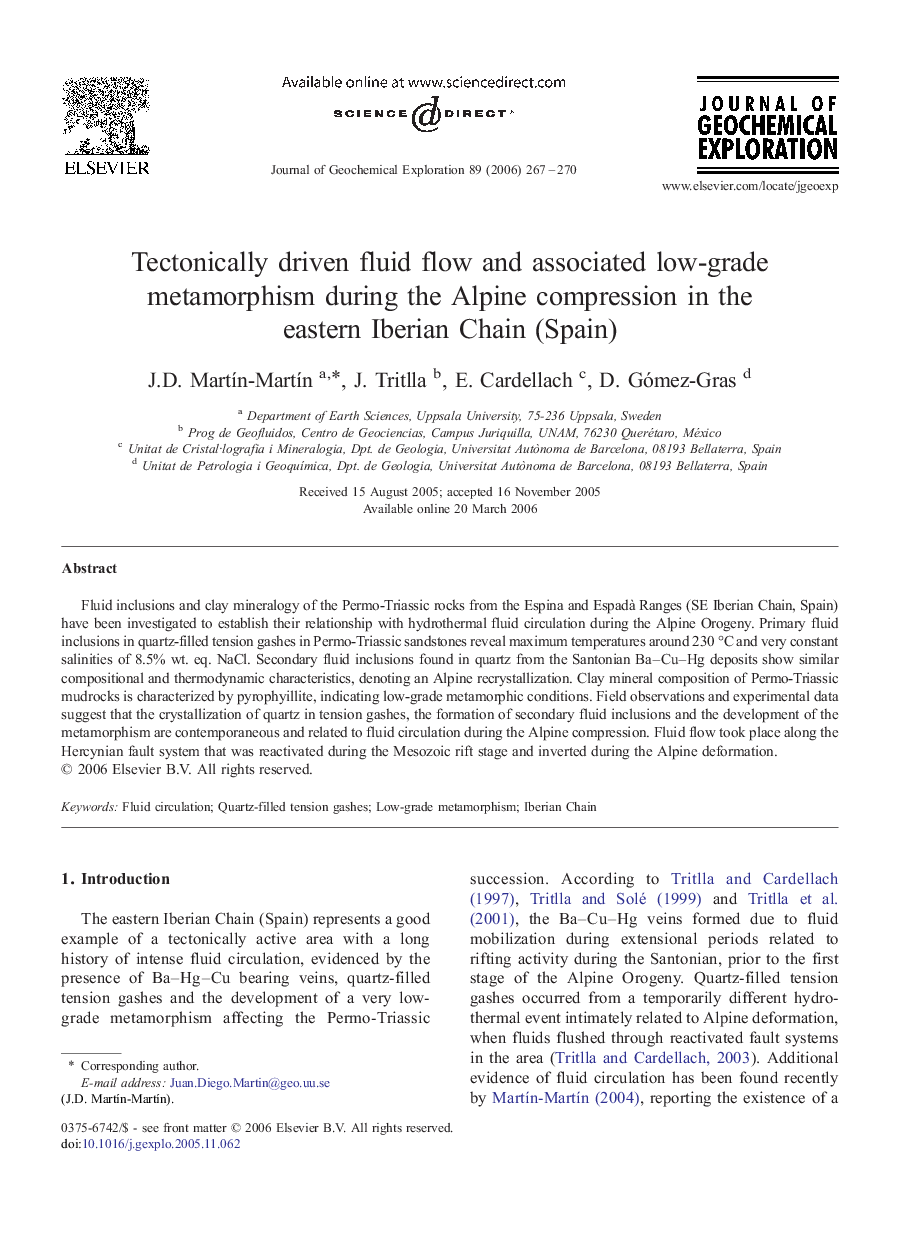| Article ID | Journal | Published Year | Pages | File Type |
|---|---|---|---|---|
| 4458467 | Journal of Geochemical Exploration | 2006 | 4 Pages |
Fluid inclusions and clay mineralogy of the Permo-Triassic rocks from the Espina and Espadà Ranges (SE Iberian Chain, Spain) have been investigated to establish their relationship with hydrothermal fluid circulation during the Alpine Orogeny. Primary fluid inclusions in quartz-filled tension gashes in Permo-Triassic sandstones reveal maximum temperatures around 230 °C and very constant salinities of 8.5% wt. eq. NaCl. Secondary fluid inclusions found in quartz from the Santonian Ba–Cu–Hg deposits show similar compositional and thermodynamic characteristics, denoting an Alpine recrystallization. Clay mineral composition of Permo-Triassic mudrocks is characterized by pyrophyillite, indicating low-grade metamorphic conditions. Field observations and experimental data suggest that the crystallization of quartz in tension gashes, the formation of secondary fluid inclusions and the development of the metamorphism are contemporaneous and related to fluid circulation during the Alpine compression. Fluid flow took place along the Hercynian fault system that was reactivated during the Mesozoic rift stage and inverted during the Alpine deformation.
